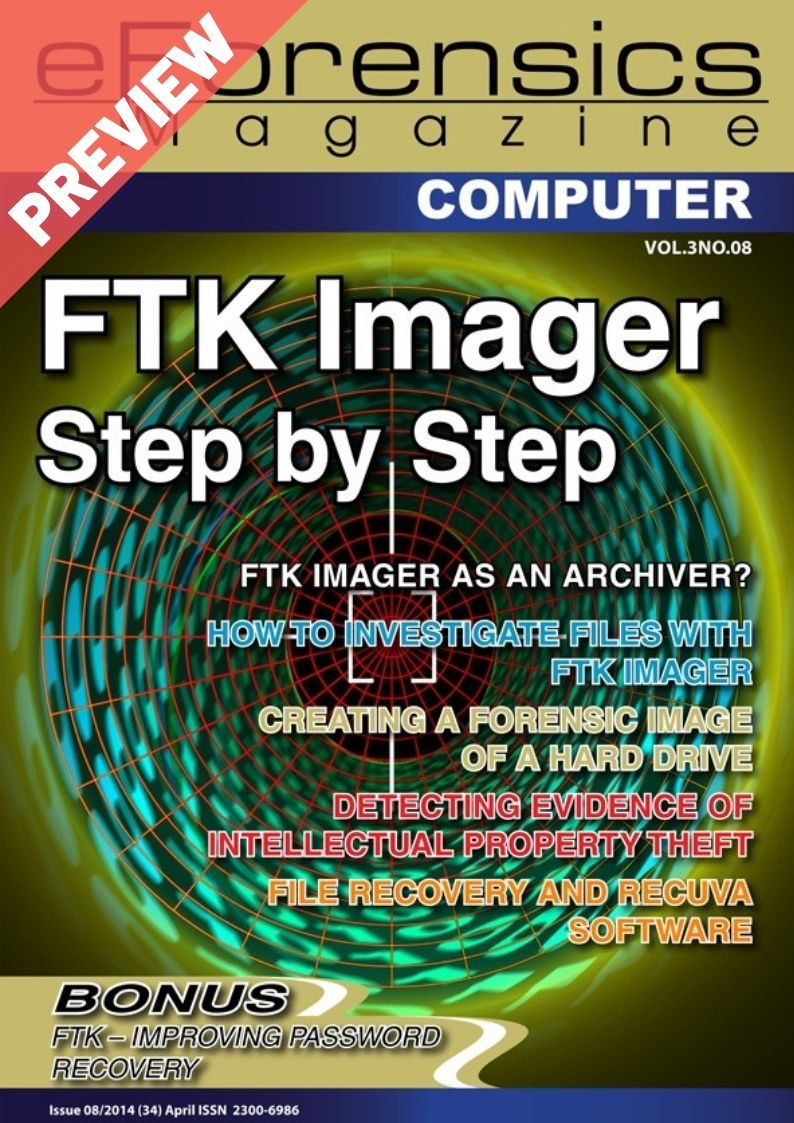
- Accessdata ftk imager limitations how to#
- Accessdata ftk imager limitations update#
- Accessdata ftk imager limitations software#
Even if you print out a copy of the messages the person has sent, keeping the original digital message is important. While you might be tempted to remove threatening or upsetting messages, you should never delete them, as they may be used as evidence.
Accessdata ftk imager limitations software#
Examiners should get in a habit of looking at the applications that are installed when they can’t find what they believe should be there.Įven though forensic software can recover deleted data, that doesn’t mean it’s an open invitation to erase it. The device does not even need allocated wireless connection, only a WiFi, and a support application. What commonly takes place are communications through user-installed applications. The case agent, however, does not see the SMS or other data that they know from other evidence should be present on the target phone. Their report shows many things supported, such as chats, GPS data, emails, call logs, images, and other common artifacts located on such devices. There will be times when examiners utilize a popular forensic tool that supports an Android, iOS, Windows, or other smartphone. The problem is that there is no way for any vendor to stay on top of every new application that comes along.
Accessdata ftk imager limitations update#
After each new update to the supported forensics tool, this list grows larger and larger. Many forensic software vendors support the ability to parse various user-installed application data.

Once you have one or more pieces of evidence in a case, the true power of XWF can be brought to bear on that evidence.īrett Shavers, John Bair, in Hiding Behind the Keyboard, 2016 User-Installed Applications After reading this chapter, you will have the knowledge to work with, and add evidence to, an XWF case. In Chapter 1, we covered the basics of installing and initially configuring XWF. When used in conjunction with F-Response, XWF can interact with essentially any system you may encounter including Solaris, FreeBSD, AIX and of course, Windows. One example would be to provide a limited and focused set of data to another examiner with a particular specialty.Īs you know, XWF is a Windows-based forensic tool but that does not limit its capabilities to deal with a wide range of file systems including Ext*, HFS, Reiser, etc. In addition to creating forensic images from source devices, XWF can create and manage container files that allow you to create subsets of data for many purposes. As we have discussed, the default values in XWF were chosen very carefully and the values used when imaging are no exception. For example, why waste time trying to compress an AVI video? This results in a much more efficient imaging process. In contrast, XWF is smart enough to know when data are already compressed, and when it sees such data, it doesn’t waste time trying to compress that data again. For example, most other tools can compress an image file but do so blindly by compressing all of the data on a device. What distinguishes XWF is that it uses much more intelligence when imaging a device. Much like other forensic tools, XWF can create forensic images from almost every type of digital media.

Accessdata ftk imager limitations how to#
After creating a new case, we will discuss how to image a wide variety of physical devices so that they can be added to our case. Brett Shavers, Eric Zimmerman, in X-Ways Forensics Practitioner’s Guide, 2014 IntroductionĮvery forensic software suite needs a way to manage a related set of forensic images and XWF is no exception.


 0 kommentar(er)
0 kommentar(er)
